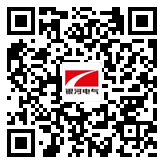国际计量局主席致辞2016年世界计量日_动态世界中的计量
- 浏览次数:5935次
- 发布时间:2016/3/28 16:11:07
- 作者:hb_yinhe
日前,国际计量局主席致辞2016年世界计量日,2016年世界计量日主题为“动态世界中的计量”,本文附中文翻译和英文原版供大家参考。
2016动态世界中的计量
作为一名机械工程师,我脑海里第一个想到是动力学是应用物理学的一个分支,特别在经典力学领域中,关于力和扭矩及其对运动影响的研究方面。动力学的研究分两类:线性的(如力、质量/惯性,位移,速度,加速度和动量)和旋转(如转矩、惯性矩、转动惯量、角位移、角速度、角加速度和角动量)。通常,物体同时参与线性和旋转运动。
许多仪器在“动态”法制计量学中被应用,举例说明:
自动称重仪器:可以对运动物体进行称重的仪器;
电表:测量电子的流动的仪器;
各种类型的仪器:测量水流量的各种仪器;
及其他各种液体流量、气体流量和计价器。
然而在英语中,“动态”一词不仅与运动有关,也与变化有关。
一个运用在多种不同科学(如计量)和工程学科中的例子可以突显这个连续性的和富有成效的“变化”,那就是太空旅行。1903年12月17日,莱特兄弟研制出第一架可控制的,具备持续自动推进功能的飞机。1957年10月4日,苏联将人造卫星1号送入轨道,这是地球的第一颗人造卫星。1969年7月20日,在美国的阿波罗11号任务中实现了第一次载人登月。1998年,国际空间站(ISS)的第一个组件,或居住的人造卫星,投入低地球轨道。2012年,NASA的好奇号探测器成功登陆并对火星进行探索。最近,2014年11月,欧洲航天局的罗塞塔任务让菲莱探测器着陆在彗星上。
计量领域发生了巨大的变化,有关某些国际标准单位的定义工作,诸如对于千克的新的定义已接近完成。为其他国际标准单位作出定义而改进设备的研究持续获得成功。
计量学如人类文明一样古老,它还在继续不断的变化,还能看到它在加速变化,它仍然是动态的。参与到被我们称之为“计量”的工作的时刻是非常令人着迷的。
2016动态世界中的计量
当我们回顾第二十一个世纪的快速变化时,我们可能会说,“唯一不变的就是变化本身”。对于计量工作的需要,以及如何满足这种需求,对于任何人来说都毫无例外。而将一个稳定可靠和精准的测量系统所带来的便利应用于动态的世界无疑是一种挑战。
众多新技术的运用满足了许多社会需求,从本质上讲,这是通过稳定和准确的计量才得以实现的。无论是在一个高速运转的磁盘驱动器中,还是在电网中可再生能源的供应和需求变化方面,或是推动环境改善和提高航空航天工业的燃油效率方面,准确掌握动态量对应用高技术取得进展是至关重要的。动态数量也在现有工业中扮演越来越重要的角色,如火车和卡车的动态称重和对汽车轮胎与发动机的震动与影响的监测。
这类动态计量的运用带来了特别的挑战。在日常应用中,将高度准确的、长期稳定的标准同动态原位计量技术结合起来是比较困难的,其本身就需要伟大的创新。
想要让我们的计量能力适用于动态的世界还需要其他措施。对于“2018再定义计划”来说,对国际单位制(SI)的未来需求将是一个关键驱动力。这种变化将确保更大的全球普遍性的测量系统会带来更多益处,并且在未来科学和技术革新中创造新的机遇。
我们需要动态的组织中处于动态的人们来化解动态世界中的计量问题。
2016Measurements in a dynamic world
As a mechanical engineer, the first thought that comes to my mind is that dynamics is a branch of applied physics, specifically the field of classical mechanics which is concerned with the study of forces and torques and their effect on motion. The study of dynamics falls under two categories: linear (quantities such as force, mass/inertia, displacement, velocity, acceleration and momentum) and rotational (quantities such as torque, moment of inertia/rotational inertia, angular displacement, angular velocity, angular acceleration and angular momentum). Very often, objects exhibit both linear and rotational motion.
Numerous instruments are utilized in “dynamic” legal metrology; some examples are:
automatic weighing instruments, which can weigh items while in motion;
electricity meters, which measure of the flow of electrons;
various types of instruments that measure the flow of water;
the flow of various other liquids and gases, and taximeters.
In English, however, the word “dynamic” relates not only to motion but also to change.
One example that highlights this continuous and productive change which encompasses many different sciences (including metrology) and engineering disciplines is space travel. On December 17, 1903 the Wright brothers made the first controlled, self-powered sustained flight. On October 4, 1957, the USSR placed in orbit the Sputnik 1, the first artificial satellite of Earth. On July 20, 1969, the first manned lunar landing was achieved by the United States’ Apollo 11 mission. In 1998 the first components of the International Space Station (ISS), or habitable artificial satellite, were put into low Earth orbit. In 2012, NASA’s Curiosity succeeded in landing on and exploring Mars. More recently in November 2014 the ESA’s Rosetta mission landed its Philae probe on a comet.
In the metrology community we are now seeing significant changes related to the definition of certain SI units as work on the new definition of the kilogram nears completion. Research continues to be successful in refining values and equipment used in the definition and the mise en pratique of other SI units.
While metrology, the science of measurement, is as old as human civilization it continues to constantly change; it continues to see forward acceleration and it continues to be dynamic. It is truly a fascinating time to be a part of this very dynamic work that we call “metrology”.
2016Measurements in a dynamic world
When we reflect on the rapid pace of change in the 21st century, we may say that “the only thing that is constant is change itself”. The needs for metrology, and how these needs are met, are no exceptions; it is a challenge to bring the benefits of a stable and accurate measurement system to a dynamic world.
Many of the needs of society are met by new technologies, and it is essential that stable and accurate measurements are available to underpin them.
The accurate knowledge of dynamic quantities is pivotal to progress in high technology whether it is the high-speed movements in a disk drive, the variations in supply and demand from renewable energy sources on electricity grids, or the drive for environmental improvement and fuel efficiency in the aerospace industry. Dynamic quantities also play an increasing role in established industries, such as the dynamic weighing of trains and trucks, and the monitoring of vibration and impact arising from the tyres and engines of cars.
These applications of dynamic measurement bring particular challenges. Linking highly accurate long-term stable standards to dynamic in situ measurements in everyday applications is difficult and itself requires great innovation.
Adapting our measurement capabilities to a dynamic world requires other steps too. The need to ‘future proof’ the International System of Units (the SI) is one of the key drivers for the redefinition planned for 2018. The changes will ensure the benefits of greater universality of the world’s measurement system, and open new opportunities for scientific and technological advances in the future.
We all need dynamic people in dynamic organisations to address the challenges of measurement in a dynamic world.





